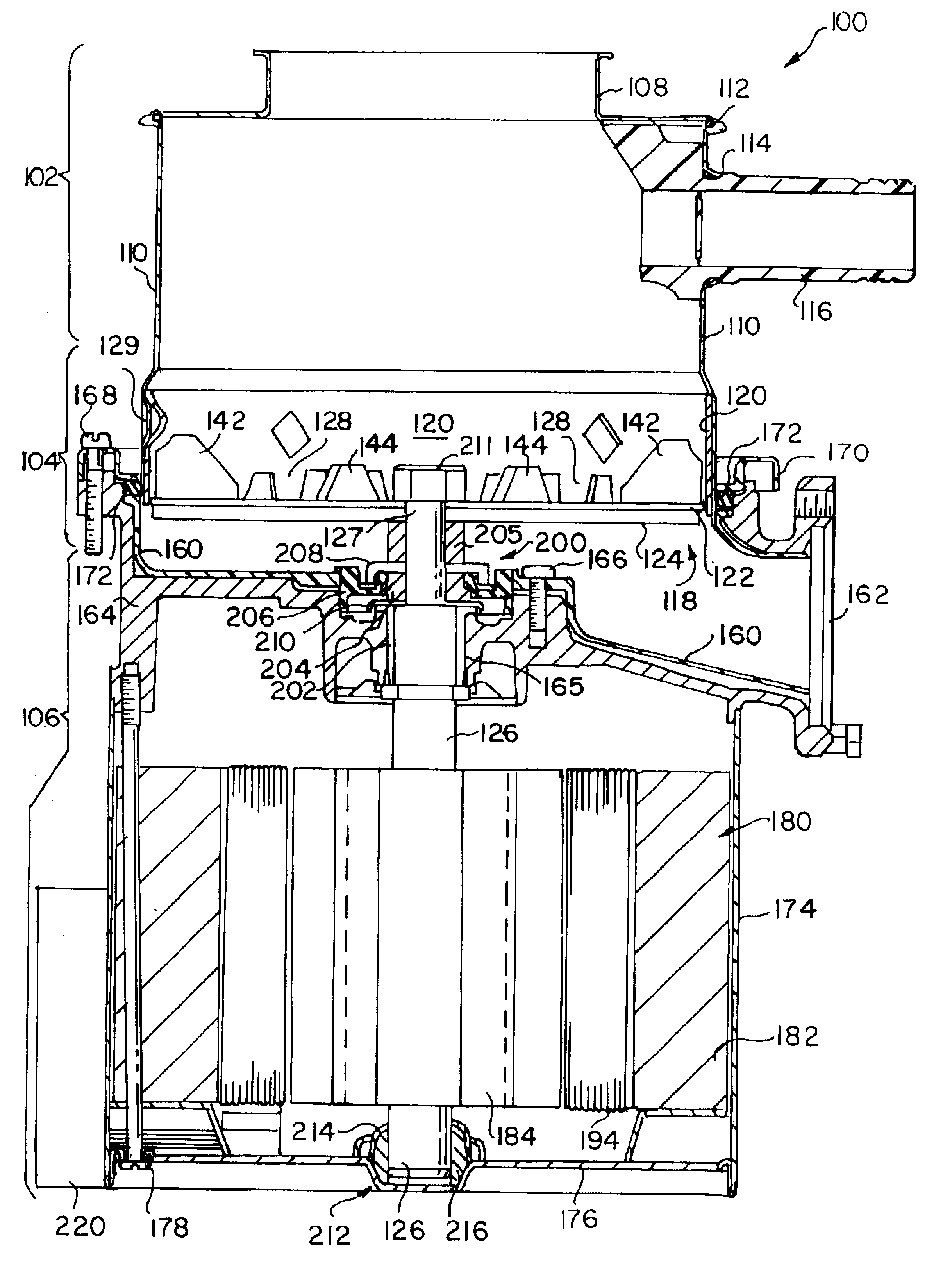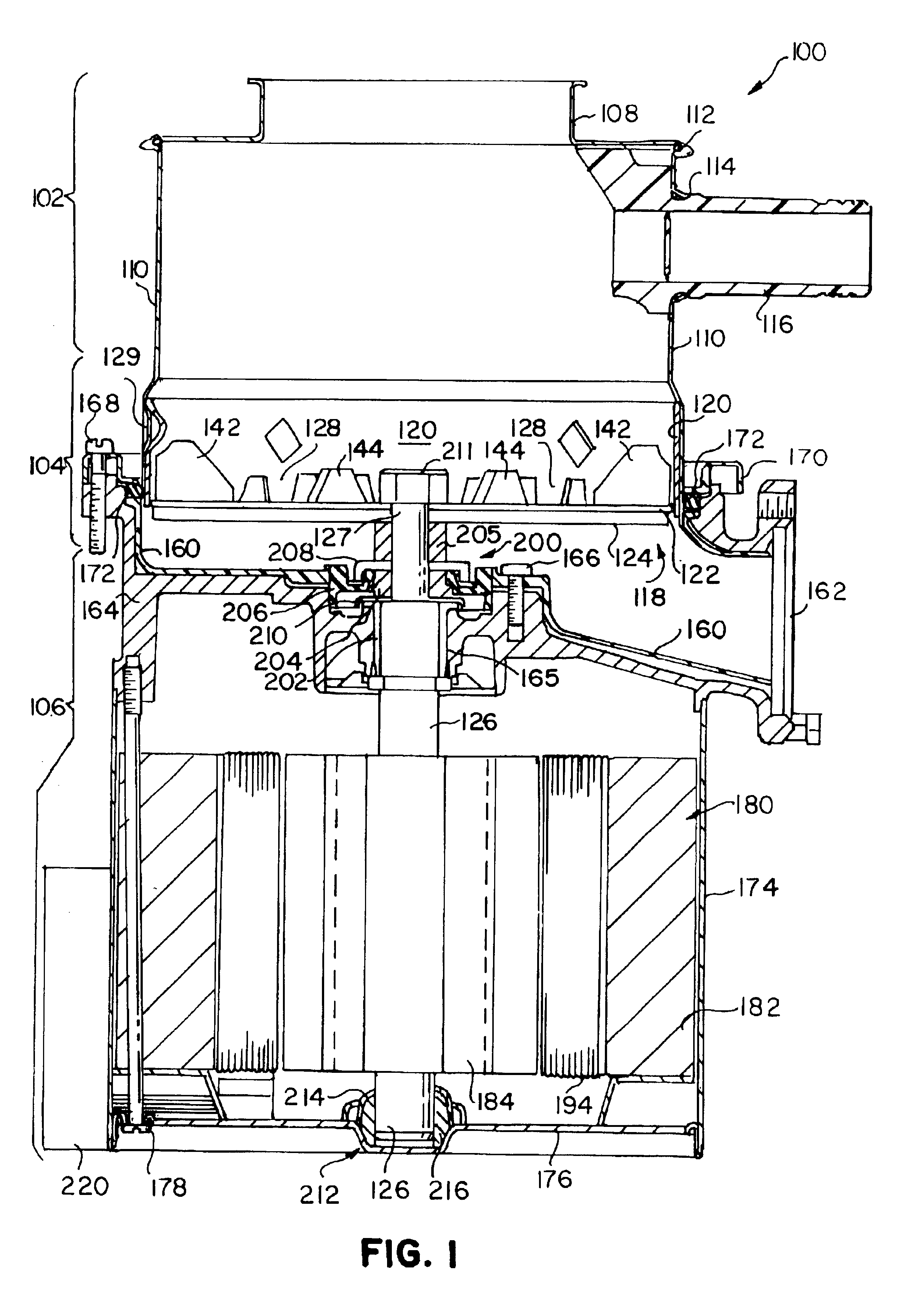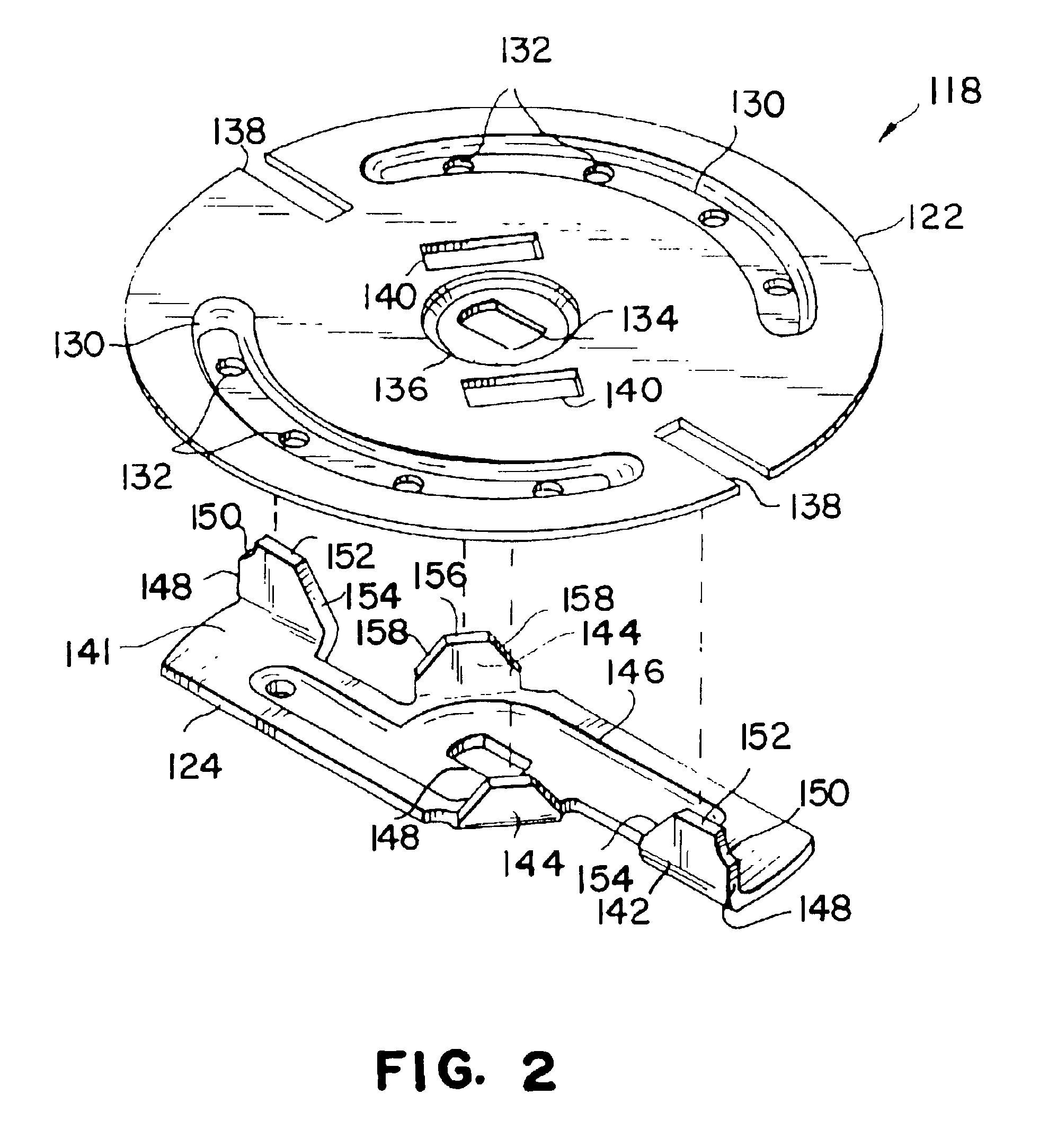Food waste disposer having a variable speed motor
a technology of food waste and motor, which is applied in the direction of gas current separation, grain treatment, agriculture, etc., can solve the problems of increased noise and vibration, affecting the grind performance of the disposer, and unpleasant odors
- Summary
- Abstract
- Description
- Claims
- Application Information
AI Technical Summary
Benefits of technology
Problems solved by technology
Method used
Image
Examples
Embodiment Construction
Turning to the drawings, FIG. 1 depicts a food waste disposer 100 embodying the present invention. The disposer 100 may be mounted in a well-known manner in the drain opening of a sink using conventional mounting members of the type disclosed in U.S. Pat. No. 3,025,007, which is owned by the assignee of the present application and incorporated herein by reference in its entirety. The disposer includes an upper food conveying section 102, a central grinding section 104 and a variable speed motor section 106. The central grinding section 104 is disposed between the food conveying section 102 and the variable speed motor section 106.
The food conveying section 102 conveys the food waste to the central grinding section 104. The food conveying section 102 includes an inlet housing 108 and a conveying housing 110. The inlet housing 108 forms an inlet at the upper end of the food waste disposer 100 for receiving food waste and water. The inlet housing 108 is attached to the conveying housin...
PUM
 Login to View More
Login to View More Abstract
Description
Claims
Application Information
 Login to View More
Login to View More - R&D
- Intellectual Property
- Life Sciences
- Materials
- Tech Scout
- Unparalleled Data Quality
- Higher Quality Content
- 60% Fewer Hallucinations
Browse by: Latest US Patents, China's latest patents, Technical Efficacy Thesaurus, Application Domain, Technology Topic, Popular Technical Reports.
© 2025 PatSnap. All rights reserved.Legal|Privacy policy|Modern Slavery Act Transparency Statement|Sitemap|About US| Contact US: help@patsnap.com



